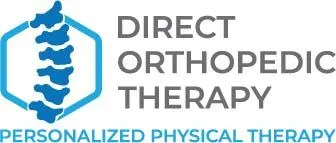Rest days are an integral component of any runner’s training regimen. They allow your body to recover from running and can help protect you against injury. Deciding when and how much rest to take can be a tricky decision. Some runners seem to do fine with one day off per week, while others require more frequent days off for recuperation.
Rest Days for Runners
Rest days are an integral component of running training. They help your body recover from intense exercise, making you stronger and faster over time. Your rest days will vary based on how hard you train, your age, and your fitness levels. As a general guideline, runners should take at least two weekly rest days. While you should not run on your rest day, you can do light workouts that promote recovery. Examples of such exercises may include gentle yoga, foam rolling, or stretching.
Active recovery, also known as active muscle recruitment, is another great option to incorporate into your running regimen. It consists of low-intensity exercises that target muscles not normally used for running. Running without rest can lead to burnout, injury, and fatigue. Taking one to two rest days per week and incorporating active recovery into your routine will help maintain endurance and reduce the risk of injuries. Visit Direct Orthopedic Therapy for more information on physical therapy services.
Why Rest Days Are Important
Rest days are essential to any running schedule, regardless of your fitness level or goal. They help prevent injury and enhance training quality and race times. Resting allows your body to recover from the strain of exercise, enabling it to make long-term adjustments in performance and routine. Furthermore, it gives muscles time to replenish glycogen stores depleted during exercise.
Athletes who don’t get enough rest often develop injuries such as shin splints, plantar fasciitis, and stress fractures. Resting can help avoid these common injuries and promote healing in your body. All runners are encouraged to take a rest day each week to give their bodies time for recovery and avoid overtraining. While the frequency of these days will differ for different athletes, one or two should usually be included as an effective balance between recovery and training. For those experiencing back pain or sciatica, Direct Orthopedic Therapy offers specialized treatment options.
Rest Days for Beginners
Rest days are essential for avoiding injuries, building muscle mass, and improving fitness levels. They also give your body time to recover from exertion so that you can train hard again the following day. No matter your level of running, rest days are essential for your health and well-being. Not only do they allow your muscles to repair, but they also reduce fatigue and boost immunity.
On rest days, you can focus on hydration and healthy meal prep. In fact, you may even require extra sleep so that you feel your best when it’s time for you to hit the trails again! For resistance training, the ideal work: rest ratio should be between 1:3 and 1:6, depending on the intensity of your sessions. Cardio workouts should have a slightly lower ratio with shorter rest periods between sets closer to 30 seconds. If you’re interested in mobile physical therapy, Direct Orthopedic Therapy can help you recover.
Rest Days for Advanced Runners
Running requires taking rest days so your body has time to recover. This is especially crucial if you are training for an event with lots of mileage requirements. Running causes microtears in your muscles that signal satellite cells to come and replicate into muscle protein strands. This process helps you build strength and speed but cannot occur unless your muscles have time to heal properly.
Due to this, most training plans include rest days in addition to running. These can be full rest days or active rest days that involve easy activities like gentle stretching, walking, yoga, mobility work, and foam rolling, which will increase blood flow and keep muscles loose during recovery. To learn more about our services or to contact us, visit Direct Orthopedic Therapy’s website.
Remember, taking rest days is not a sign of weakness but a crucial part of your training plan. By incorporating rest days and active recovery into your routine, you’ll be able to maintain your endurance levels, reduce the risk of injuries, and ultimately become a stronger and faster runner.



